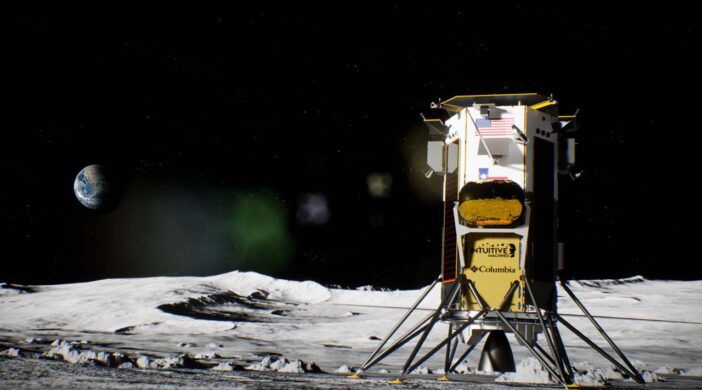
Intuitive Machines to Go Public as Company Changes Landing Target to Lunar South Pole (Image Credit: Payload)
Lunar exploration company Intuitive Machines will go public on Nasdaq after the approval of a merger with a special purpose acquisition company (SPAC).
Shareholders of the Inflection Point Acquisition Corp. (NAS: IPAX) approved the merger by a vote of 23.6 million shares in favor, 10.1 million against and 10 abstentions. The merged company will now go public as Intuitive Machines under the symbol LUNR.
The merger is expected to generate $331 million for the Houston-based company. NASA has awarded three lunar landing missions to Intuitive Machines under the Commercial Lunar Payload Services (CLPS) program. CLPS pays private companies to deliver agency-funded payloads to the Moon.
The vote came two days after Intuitive Machines announced it was shifting the landing site for the first of those missions to the south pole of the moon.
“Redirecting Intuitive Machines’ IM-1 mission landing site is a testament to our collective commitment to supporting NASA’s Artemis Program and advancing lunar exploration for the benefit of humanity,” said Steve Altemus, Co-Founder, President and CEO of Intuitive Machines. “The Company is honored to accept the historic and scientific responsibility of bringing the United States to the lunar South Pole Region for the first time ever.”
Intuitive Machines’ Nova-C lander had been scheduled to land between Mare Serenitatis and Mare Crisium in the northwest quarter of the moon. A SpaceX Falcon 9 is scheduled to launch the mission in late June.
NASA’s Artemis program is focused on returning astronauts to the moon. The space agency believes there is water ice and other volatiles at the south pole that can support human exploration.
The IM-1 mission is set to operate for one lunar day (14 Earth days). Nova-C will deliver the following payloads to the lunar surface:
- Laser Retro-Reflector Array, NASA: Eight half-inch retro-reflectors that will allow orbital spacecraft to determine the lander’s precise location on the surface using laser light.
- Navigation Doppler Lidar for Precise Velocity and Range Sensing (NDL), NASA: NDL will provide extremely precise velocity and ranging data during the lander’s descent and landing.
- Lunar Node 1 Navigation Demonstrator (LN-1), NASA: A CubeSat-sized S-band beacon that will demonstrate autonomous spacecraft positioning through navigation measurements.
- Stereo Cameras for Lunar Plume-Surface Studies (SCALPSS), NASA: SCALPSS will capture video and still images of the impact the lander rocket plume has on the lunar surface.
- Low-frequency Radio Observations for the Near Side Lunar Surface (ROLSES), NASA: A low-frequency radio receiver system to determine photoelectron sheath density and scale height, acquire observations of solar and planetary radio sources from the lunar surface, sense near-surface charged dust, and provide a first-ever measurement of the radio environment between 10 kHz and 30 MHz at the landing site.
- EagleCAM, Embry–Riddle Aeronautical University: A camera will be ejected from Nova-C during descent to provide images of the vehicle’s landing. EagleCAM will also test an electrostatic dust-removal system.
- ILO-X, International Lunar Observatory: An imaging suite that will capture some of the first photos of the Milky Way Galaxy Center from the surface of the moon along with making other observations.
- Lonestar, Lonestar Data Holdings: The first data center placed on the moon.
- Omni-Heat Infinity, Columbia Sportswear: Reflectivity technology that will protect the lander from extreme lunar temperatures.
- Lunaprise, Galactic Legacy Labs: Microfische disks with messages called lunagrams that will use words and photos to tell the story of our civilization.
- Jeff Koons Art Cube: Digital works of Koons’ Moon Phases sculptures.
The Falcon 9 that launches IM-1 will also carry Geometric Energy Corporation’s DOGE-1 satellite as a secondary payload. It is the first spacecraft paid for with the cryptocurrency Dogecoin.








